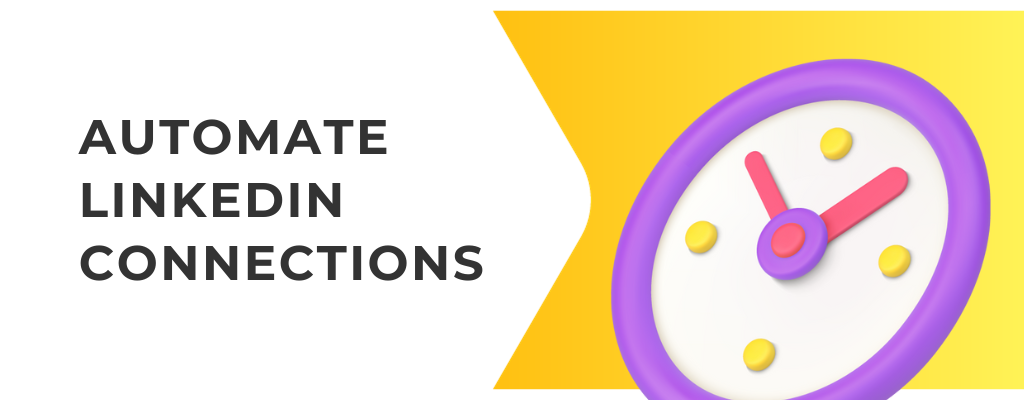The Advantages of Automating LinkedIn Connections
Time Efficiency
Automating LinkedIn connections can save users a significant amount of time. Manually sending connection requests to numerous individuals can be a time-consuming task. On the other hand, automation tools can streamline this process by sending personalized connection requests to multiple users simultaneously. This allows professionals to focus their time and energy on other important tasks, such as building relationships or engaging with their existing connections.
Increased Reach
Individuals can expand their network more quickly and efficiently by automating LinkedIn connections. Automation tools can help users identify and connect with potential prospects, clients, or industry influencers. These tools often use advanced algorithms to suggest relevant profiles based on an individual’s professional interests and goals. By leveraging automation, professionals can rapidly expand their network and tap into new opportunities.
Improved Productivity
Automation tools offer features beyond simply sending connection requests. They can help users personalize their outreach messages, schedule follow-up messages, and even track the progress of their connection requests. These features enable individuals to maintain high productivity by automating routine tasks and ensuring efficient communication with their connections.
The Drawbacks of Automating LinkedIn Connections
Lack of Personalization
One of the primary concerns with automating LinkedIn connections is the need for more personalization. While automation tools claim to send personalized messages, they often need to catch up to the genuine human touch. Users may receive connection requests that appear generic or impersonal, leading to declining acceptance rates. Building meaningful relationships requires a personal touch, and automation may hinder the development of genuine connections.
Risk of Being Perceived as Spam
Automated connection requests run the risk of being seen as spam. LinkedIn’s terms of service strictly prohibit spamming and can result in account suspension or termination. If automation tools are not used responsibly, users may unintentionally violate these rules, leading to adverse consequences. It is essential to balance automation and maintaining the platform’s integrity.
Quality vs. Quantity
While automation can help users rapidly expand their network, it may compromise the quality of connections. Quantity should be considered the importance of building genuine relationships. Automating connections with proper vetting can result in a network with relevant and high-quality connections. It is crucial to balance quantity and quality when automating LinkedIn connections.
Ethical Considerations
Respect for Privacy
When automating LinkedIn connections, it is essential to respect the privacy and preferences of other users. Some individuals may have strict privacy settings or prefer not to receive unsolicited connection requests. Automation tools should provide users with options to tailor their outreach efforts accordingly. Respecting the boundaries and preferences of others is crucial to maintaining the platform’s integrity.
Maintaining Professionalism
LinkedIn is a professional networking platform, and maintaining professionalism is paramount. Automation tools should not be used to engage in spammy or inappropriate behavior. Users must use automation responsibly, ensuring that their outreach efforts align with LinkedIn’s guidelines and the general principles of professional networking.
Authenticity and Building Genuine Relationships
Automation tools should be used as a supplement to, rather than a replacement for, genuine human interaction. While automation can facilitate the initial connection, investing time and effort in nurturing and building genuine relationships is essential. This includes engaging with connections, sharing valuable content, and offering assistance when needed. Authenticity is key to establishing trust and credibility within the LinkedIn community.
Best Practices for Automating LinkedIn Connections
Research and Targeting
Before automating LinkedIn connections, conducting thorough research and identifying the target audience is crucial. Understanding the industry, job roles, or interests of potential connections can help tailor outreach efforts and increase the likelihood of acceptance. Automation tools should provide robust filtering options to ensure that connection requests are sent to relevant individuals.
Personalization and Customization
To overcome the challenge of lack of personalization, automation tools should provide options for customizing connection requests and messages. Users should be able to add a personal touch by referencing shared interests, recent achievements, or mutual connections. This helps establish a genuine connection and increases the chances of acceptance.
Monitoring and Adjusting
Automating LinkedIn connections should not be a set-it-and-forget-it approach. Monitoring the progress, acceptance rates, and responses to connection requests is essential. Users can make necessary adjustments to their outreach strategy by analyzing the data and feedback. This iterative approach ensures continuous improvement and better results over time.
Automating LinkedIn connections has its advantages and drawbacks. While automation can save time, increase reach, and improve productivity, it may compromise personalization and authenticity. Ethical considerations such as privacy, professionalism, and building genuine relationships should guide the responsible use of automation tools. By following best practices, individuals can leverage automation to expand their network effectively while maintaining the integrity of the LinkedIn platform. Ultimately, the success of automating LinkedIn connections lies in striking a balance between efficiency and meaningful engagement.

